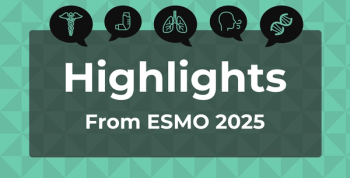
National Asthma and Allergy Awareness Month: Economic Costs, Threats to Access, and the Impact of Policy Changes
Key Takeaways
- Allergies and asthma affect millions in the US, with significant economic costs, especially for food allergies and asthma treatments.
- Insurance coverage disparities limit access to allergy and asthma care, with public insurance often restricting specialist visits.
During National Asthma and Allergy Awareness Month, the high prevalence and costs of allergies and asthma in the US are evident, alongside disparities in treatment access and the potential impact of recent policy changes on environmental and public health efforts.
In 1984,
Allergy, Asthma Prevalence and Economic Costs
Every year, more than 100 million people in the US experience various types of allergies, including seasonal, eczema, and food allergies, affect nearly 1 in 3 adults and more than 1 in 4 children.2 Allergy triggers include food, hay fever, skin, respiratory, and more, such as medications. Notably, children with food allergies are 2 to 4 times more likely to have other related conditions like asthma or other allergies compared with those without.3
The annual costs of allergies vary depending on the type of allergic reaction and the specific treatment necessary. For example, nasal allergies can cost between $3 billion and $4 billion each year.2 Estimates suggest that childhood food allergies cost $24.8 billion annually, with direct medical costs accounting for $4.3 billion a year.4 Food allergies are estimated to create $5.5 billion in out-of-pocket costs with about 31% attributed to special food expenses.
More than 28 million people in the US have received an asthma diagnosis, with the highest rates in Black adults.5 Asthma is the leading chronic disease in children, and non-Hispanic Black children are nearly 2 times more likely to have asthma compared with non-Hispanic White children. Additionally, asthma is considered one of the most common and costly diseases in the US, according to the AAFA.
Reports indicate that the annual economic costs of asthma treatment are around $82 billion and medical costs make up almost $50.3 billion.6 Estimates show that patients with asthma pay $3266 higher costs per year compared with medical costs for people without asthma.5 Costs from missed work and school days make up $3 billion in losses.6 Researchers estimate that the cost of uncontrolled asthma will be nearly $964 billion from 2019 to 2038.
Insurance Coverage
Underinsurance or lack of insurance often exacerbates disparities for individuals with allergies.4 Medicaid coverage often limits patients' access to allergist specialists. Physicians are often less likely to accept new patients with Medicaid compared with those with Medicare or private insurance, though this varies by specialty and state.
The most popular autoinjector for allergic reactions, epinephrine (EpiPen), can cost upwards of $600 for a package of 2 without insurance.7 Some physicians offer generic versions of the EpiPen, but these only costs a few hundred dollars less. Subcutaneous immunotherapy treats other types of allergies and is often covered by insurance plans with some added out-of-pocket costs.8 Allergy injections typically cost between $965 and $1994 or even more depending on the frequency of treatment. If a patient receives injections twice a week for 6 months and then twice a month for 6 months, allergy shots at a clinic could cost around $4000 for a year of treatment.
Insurance coverage also largely determines the asthma-related costs patients pay for treatment in the US. Notably, people under 65 with Medicaid or other public insurance are 2 times more likely to have asthma than if they have private insurance.6 Health insurance helps adults with low socioeconomic income achieve better asthma control. Public insurance is associated with a higher likelihood of asthma-related emergency department visits or hospital stays for children compared with private insurance. Public insurance also makes children less likely to see an asthma specialist compared with private insurance, even though specialist care is highly suggested for patients with poorly controlled conditions.
Significantly increased costs of asthma medications have remained a barrier to asthma management for the past decade. The most common reason people with asthma don’t use their prescribed treatments is due to the identified costs, based on the AAFA’s 2017
Effective in June 2024, 3 major asthma inhaler manufacturers announced a $35 per month cap on out-of-pocket costs for people with commercial or private insurance or no insurance.6 Individuals with public insurance do not qualify for the price cap. Price caps are a step in the direction of drug accessibility, but cost barriers still exist for many who are not included in discounts or struggle with affordability.
A ban on a propellant formerly used in inhalers increased the overall price of inhaled asthma medicines in 2008. The average retail price of an albuterol inhaler was $98 in 2024. Between 2014 to 2018, Medicare spend on inhalers increased by 128%. The use of biologics for asthma treatments has become more popular but access to these treatments is limited for people with public insurance, mainly due to high costs. Despite cost-related medication costs decreasing over the past 10 years, 1 in 6 adults with asthma still skip medicines because of the price.
Policy Shifts and Potential Impacts
President Donald J. Trump ordered agencies to act “urgently” to curb asthma, but has simultaneously moved to roll back air pollution limits.10 Of the 31 Environmental Protection Agency (EPA) rules that are facing scrutiny, 12 attempt to protect Americans’ ability to breathe by curtailing air pollutants. The Environmental Protection Network analyzed the EPA’s data to conclude these rollbacks will likely cause nearly 200,000 premature deaths through 2050.11 Additionally, the HHS eliminated the CDC’s asthma office, which provided funding and advice to state and local health officials on how to prevent the inflammatory lung condition.10
HHS Secretary Robert F. Kennedy Jr stated in his testimony before the Senate that his focus is on chronic diseases rather than infectious ones.12 Following this statement, Kennedy put every staff member in the CDC’s Asthma Control Program on administrative leave, and communicated he would be eliminating these positions by June 2025.10
With the CDC program funds experiencing rollbacks, the administration has cut programs that help reduce exposure to things like smoke and mold as well as training school nurses on how to administer inhalers or other medications. The program had allocated support for communities to respond to asthma threats from environmental disasters while helping patients diagnosed with their symptoms.
Additionally, experts say the sweeping cuts to HHS can heavily impact food safety and consumer protections as it encompasses both the FDA and CDC.13 Toxic heavy metals contamination is a significant food safety concern, especially now that the Lead Poisoning Prevention and Surveillance Branch in the CDC has been fired.
Patients with allergies, asthma, or both experience substantial economic impacts and these challenges could impact access to necessary care and medications. The recent policy shifts regarding environmental regulations and public health infrastructure may have implications for the ongoing management and prevention of both allergy and asthma conditions.
References
1. National Asthma and Allergy Awareness Month. Asthma & Allergy Foundation of America. October 7, 2024. Accessed April 30, 2025.
2. James J. Allergy facts and figures. Asthma & Allergy Foundation of America. April 2025. Accessed April 30, 2025.
3. Allergy statistics in the US. Allergy & Asthma Network. Accessed April 30, 2025.
4. Richardson T, Vickery BP, Gupta R, et al. Navigating the landscape of food allergies: insights and perspectives from the AMCP market insights program. J Manag Care Spec Pharm. 2024;30(8):S1-S10. doi:10.18553/jmcp.2024.30.8-a.s1
5. James J. Asthma facts. Asthma & Allergy Foundation of America. April 2022. Accessed April 30, 2025.
6. Cost of asthma on society. Asthma & Allergy Foundation of America. January 2025. Accessed April 30, 2025.
7. Marsh T. How much is an EpiPen? Cost-cutting tips, alternatives, and more. GoodRx. June 26, 2023. Accessed May 1, 2025.
8. Lester M. Allergy shots: how much do they cost, and do you need them? GoodRx. March 21, 2022. Accessed May 1, 2025.
9. My life with asthma. Asthma & Allergy Foundation of America. 2017. Accessed April 30, 2025.
10. Wittenberg A. Childhood asthma will worsen with pollution rollbacks and CDC cuts. Scientific American. April 22, 2025. Accessed May 1, 2025.
11. Facts: rollbacks of pollution rules will cost 200k lives. Environmental Protection Network. Accessed May 1, 2025.
12. Bendix A, Fattah M, Edwards E. RFK Jr. says government ignores chronic disease, but that’s misguided. NBC News. February 2025. Accessed May 1, 2025.
13. Henderson B. As U.S. pieces together how HHS cuts are affecting food safety, stakeholders speak out. Food Safety Magazine. April 7, 2025. Accessed May 1, 2025.
Newsletter
Stay ahead of policy, cost, and value—subscribe to AJMC for expert insights at the intersection of clinical care and health economics.







































